Can the US handle more immigration? History and the Census suggest the answer is yes.
When Salvatore Pugliese disembarked the S.S. America at Ellis Island after two weeks at sea, an immigration officer grilled the 17-year-old tailor.
Was he a polygamist? An anarchist? Did he advocate for the overthrow of the U.S. government?
"No," the teenager from southern Italy replied to each question until asked whether he intended to become a citizen of the United States. The officer typed the boy's answer on an immigration form: Yes.
It was that easy to gain entry into the United States in December 1920. But things were about to change.
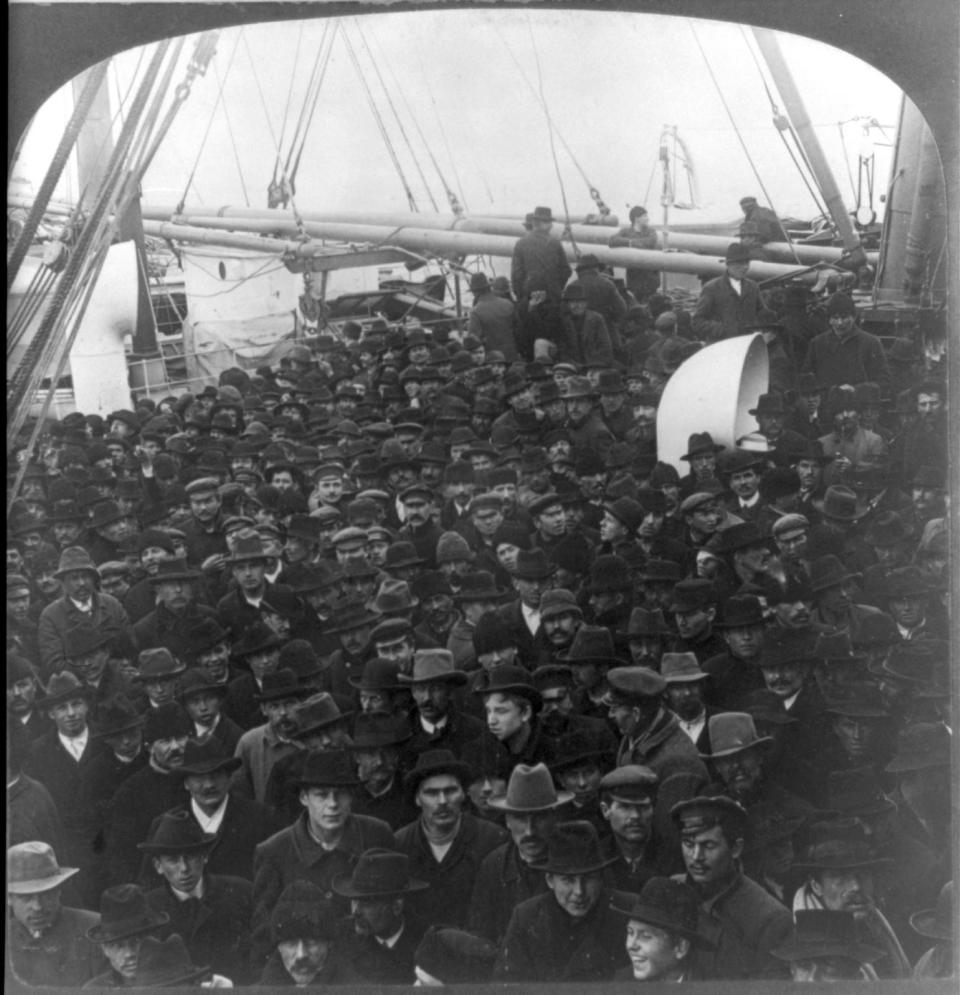
Pugliese immigrated to the U.S. soon after the immigrant population reached an all-time high as a percent of America's total. That historical peak – of just under 15% – was followed by a nativist backlash and sharp restrictions on immigration.
The U.S. is nearing that high water mark again.
U.S. census data shows the foreign-born population made up 13.9% of the total in 2022, and the bureau's latest monthly estimate suggests it hit 15% last year, according to one analysis.
Amid a political firestorm over management of the U.S.-Mexico border, analysts say how elected officials – and voters – respond to the shifting demographics could have consequences for the nation's prosperity and psyche for years to come.
Will that era's restrictionist approach repeat itself, as the Biden administration and Congress wrangle over tough border restrictions?
"We’re not only in a historical moment; we’re in a turning point in immigration," said Muzaffar Chishti, a senior fellow with the nonpartisan Migration Policy Institute and director of the MPI office at New York University School of Law. "Today there is a general disquiet about large numbers and a disquiet about the rate at which this is happening,"
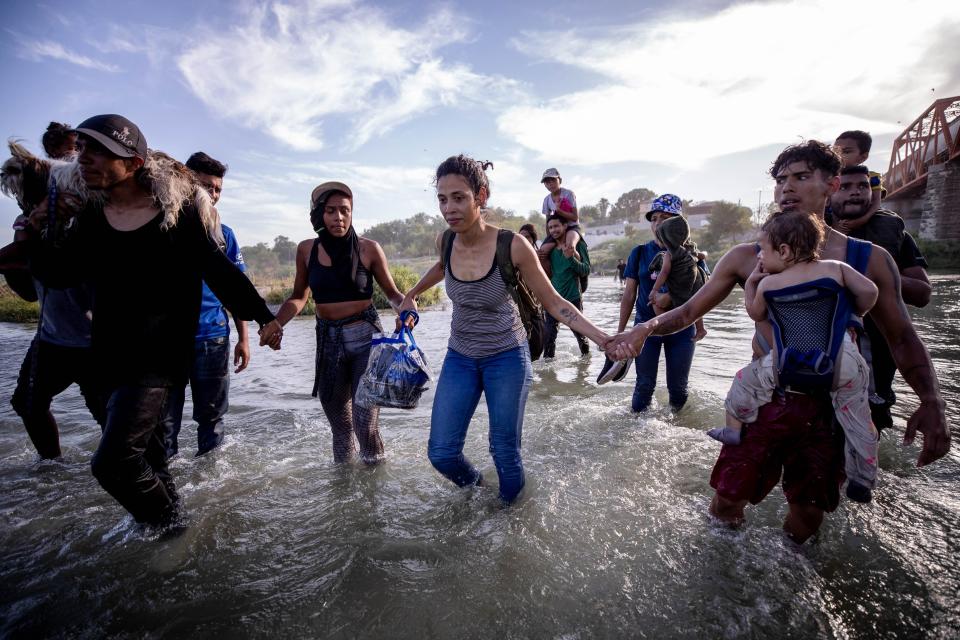
A century ago, Americans were reeling from significant social change and shifts in the global world order. Immigrants didn’t bear responsibility for that social change but they became the scapegoats, said Aaron Reichlin-Melnick, policy director at the nonprofit American Immigration Council.
"Modernization had transformed industries; the social order had been disrupted by the rise of women and their power; the ancient orders of European monarchies had all shifted and the rise of communism had transformed the power of the working class," he said. Many Americans "felt the pace of change was too much and wanted to pump the brakes."
Once again recent technological advances have transformed the global economy.
Twenty-five years ago, Americans were signing up for their first email addresses; today, artificial intelligence is the new horizon. Climate change is forcing people to adjust to new weather patterns and abandon lands that once sustained them. Political and economic instability has led to an unprecedented exodus in the western hemisphere.
Even a decade ago, the idea that half a million people could trek the once-impenetrable Darien Gap jungle in a single year would be have laughable; today, social media lets migrants share their experience crossing the continent, and the U.S. border, in real time.
Still, migrants and refugees hang their hopes, as people did a century ago, on a country they see as a beacon of freedom and opportunity.
Immigration backlash then and now: Trump vows mass deportation
Five months after Pugliese landed at Ellis Island, the United States issued its first broad-based numerical restrictions on immigration.
The U.S. had already experimented with racist immigration restrictions in the Chinese Exclusion Act of 1882. But the limits contained in the 1921 "Emergency Quota Act" were generalized – based on race and nationality – and were made "stricter and permanent" in the Immigration Act of 1924, according to the National Park Service, which manages Ellis Island as part of the Statue of Liberty National Monument.
"These country-by-country limits were specifically designed to keep out 'undesirable' ethnic groups and maintain America’s character as nation of northern and western European stock," according to the National Park Service. The Act was endorsed by the Ku Klux Klan.
The law restricted the legal entry of Italians like Pugliese; along with Jews, southern and eastern Europeans, Chinese and others from Asia. "What people said about Italians and Jews on the floor of Congress would be unprintable today," Chishti said.
A century later, immigration is looming large over the 2024 election.
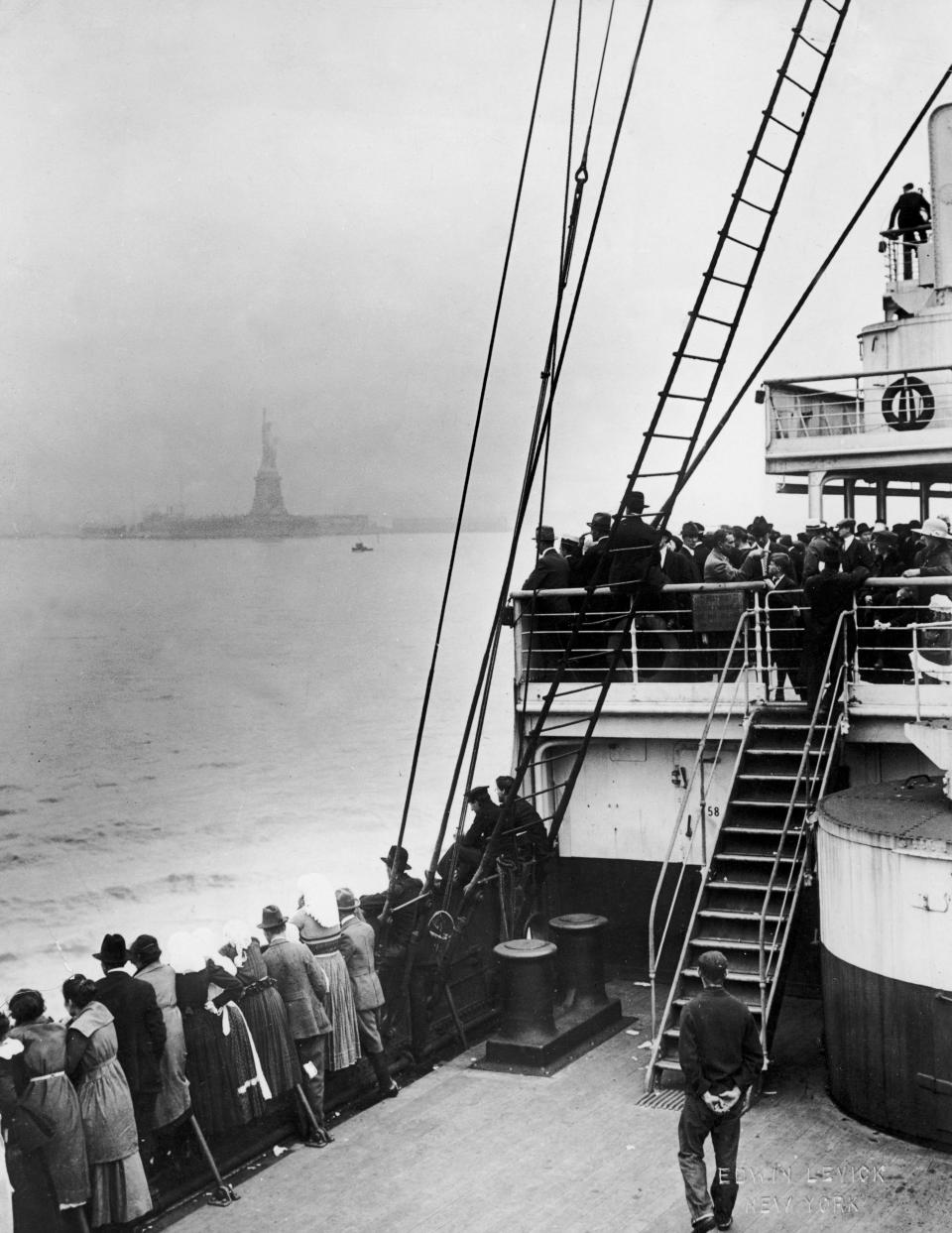
Donald Trump kicked off his first presidential campaign in 2016 by promising to reduce immigration, using language targeting Mexican immigrants that many saw as race-baiting. Trump appears to be doubling down on the formula as he campaigns again for the Republican presidential nomination. In January, he promised "the largest deportation program in American history."
He has unapologetically used rhetoric, which some noted echoed language used by Adolf Hitler, at a New Hampshire rally where he said immigrants entering the U.S. illegally are “poisoning the blood of our country.” Germany's Nazi dictator used similar language to dehumanize Jews and justify the genocide of millions during the Holocaust.
"Trump would be of a similar mindset to what we saw then," said David Bier, associate director of immigration studies at the Cato Institute, a libertarian think tank in Washington, D.C. "But I do think the people who that resonates with are still a minority of the country."
Still, Republicans see political gold at the border, where thousands of migrants from the Americas and nations around the world are seeking entrance to the U.S. each week. The White House has shifted to the right on immigration, with Biden promising to "shut down the border right now" if U.S. senators can agree on a tough border bill currently being negotiated.
At a news conference in Eagle Pass, Texas, last month alongside dozens of House Republicans, House Speaker Mike Johnson, R-La., called the surge in migrant crossings "a disaster of the president’s own design."
White House spokesperson Andrew Bates pushed back in a statement, accusing House Republicans of "hamstringing our border security in the name of extreme, partisan demands.”
U.S. economic growth depends on immigrants
In a total population of 333.3 million people in the United States, 46.2 million, or 13.9%, are foreign-born, according to the Census Bureau's 2022 American Community Survey. More than half of those are naturalized U.S. citizens, people who lawfully obtained U.S. citizenship after immigrating.
An analysis by the Center for Immigration Studies of the bureau's October Current Population Survey data puts the foreign-born population higher at 49.5 million, or 15% of the total population – edging above the early 20th century peak. The Current Population Survey is a more frequent estimate of U.S. demographics based on a monthly survey of households.
Today, if it weren't for immigration, the population of the United States would be shrinking, Bier said, because of low birth rates and rising deaths due to an aging population. Population growth rates in the 2020s are the lowest of any decade in the history of the U.S., which is bad for the economy, he said.
The Census Bureau projects the U.S. population will begin declining in the second half of this century in a low-immigration scenario. In a zero immigration scenario, the population decline would begin this year.

"We need immigration to make up for the fact that we’re having fewer children and people are living longer and retiring," he said. "It puts upward pressure on the cost of living if more people are consuming and fewer are producing. That puts a drag on economic growth."
Steven Camarota of the Center for Immigration Studies, which advocates for reduced immigration, said population growth through immigration will deliver a bigger economy but the net benefits of increased immigration are felt unevenly.
"If you are an employer, you are better off," he said. "If you are a worker you might be worse off. Immigration creates winners and losers."
Analysts across the political spectrum agree on one thing, though: the current immigration system is outdated and unresponsive to a changed world.
In its December report, the Bureau of Labor Statistics reported 9 million job openings.
"That is one of the infuriating aspects of the conversation," said Jennie Murray, president of the National Immigration Forum, which works to build a moderate coalition for immigration reform.
Migrants looking for work are being stopped at the border or permitted entry without access to work authorization, while jobs in the U.S. are going unfilled amid a significant labor shortage, she said.
Often, these are low-wage jobs that underpin the economy but that U.S.-born workers don't want, in industries like farm labor and nursing home care. But the current market is so tight that there are also more than half a million unfilled manufacturing jobs and millions of openings in industries from trade and transportation to professional services.
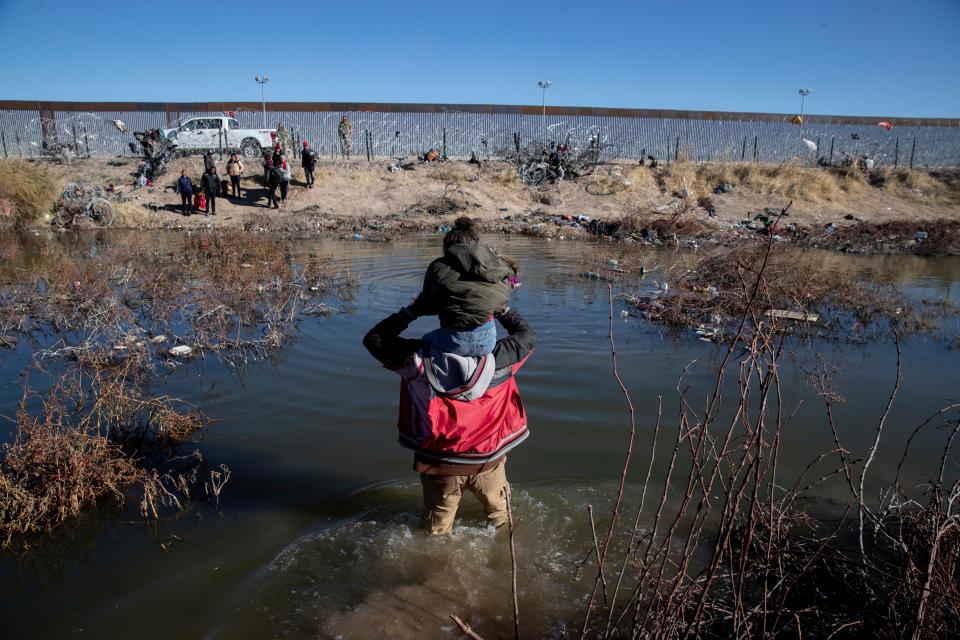
"We are a large and robust country and economy, and to continue to be economically competitive we need to make sure our labor needs are met," she said.
But rather than expand or overhaul the legal immigration system, Congress is debating the harshest immigration law since the 1990s, aiming to further close off lawful paths to the U.S. for migrants including through asylum applications and humanitarian parole.
And in the nation's largest border state, Texas Gov. Greg Abbott has pushed restrictive border measures through his Operation Lone Star. These include laying physical barriers such as razor wire and buoys in the Rio Grande; a new border enforcement law called S.B. 4 targeting people suspected of crossing the border illegally; and a busing program that has sent 97,000 migrants released by Border Patrol to Democrat-led cities across the U.S.
'A history of waves of immigration'
Pugliese, the young Italian immigrant, told the immigration officer he was headed for Boston. He gave an address, 107 Salem St., and said his brother Capone lived there.
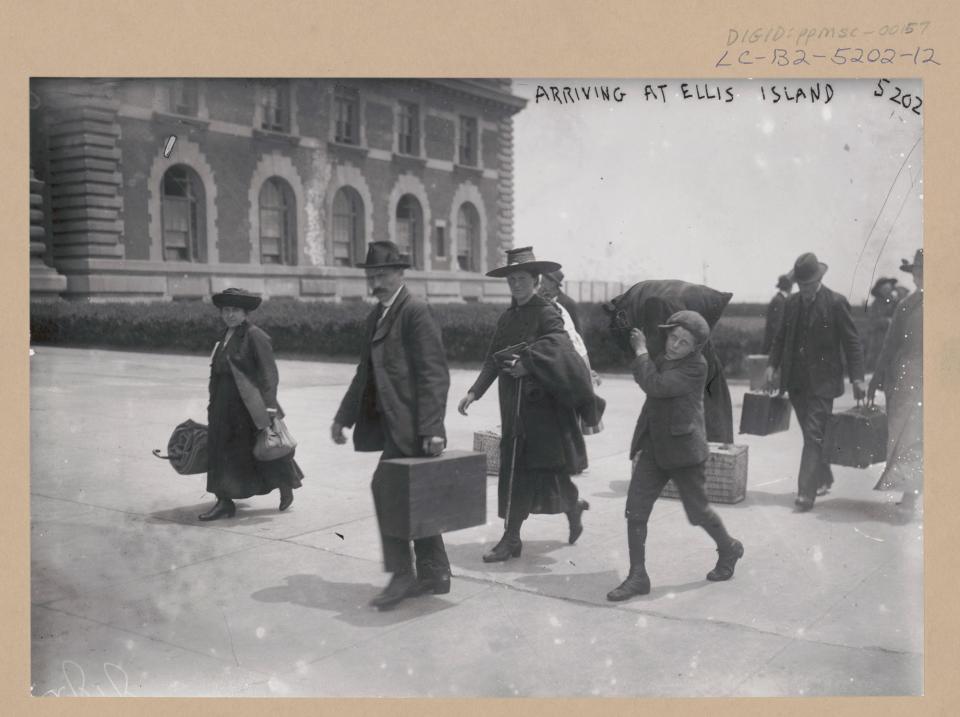
Today, that address is in Boston's North End – a dense urban neighborhood that attracts tourists to its many restaurants and historic sites. The business occupying the address Pugliese gave is now an Italian restaurant.
There's no record of whether Pugliese arrived or what he did there.
"American history is a history of waves of immigration, subsequent unrest and then a generation later people saying, ‘Why was everyone so concerned about this?’" Reichlin-Melnick said.
Lauren Villagran can be reached at [email protected] and on X @laurenvillagran.
This article originally appeared on USA TODAY: US immigration is a political sore spot. The economy doesn't care.
